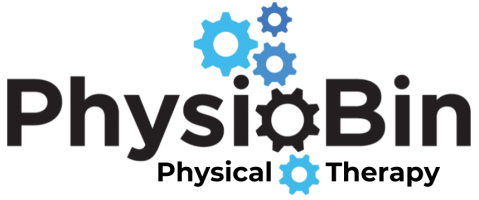Hip Pain

Dr. Dan Schumann, DPT,
Owner of PhysioBin PT
Is Hip Pain Hindering Your Ability To Perform Daily Activities Like Weightlifting, Running, Jumping, Squatting, Stair Climbing, Getting Out Of A Low Seat, Sleeping, Or Standing Up From A Chair?
Are these descriptions you?
- You anticipated relief in a matter of days or weeks, but it hasn't come.
- So you've already exhausted the effectiveness of heat, cold, and home TENS units?
- You went to a masseuse a few times, but the discomfort returned after only a few days?
- You visited a doctor, who examined you, gave you an injection, or prescribed medication, but the effects wore off quickly?
- You've gone to physical therapy before, and it didn't work?
- You've concluded you can get along OK if you simply refrain from aggravating activities?
We’re Here to Assist You in Discovering Lasting Solutions!
Typical Hip Conditions We Treat:
- Arthritis
- Labral Tears
- Joint Instability
- Hamstring Strains
- Femoroacetabuar Impingement
- Hip Flexor Tendinopathy
- Iliotibial Band (IT Band) Syndrome
- Pre/Post-Op Total Hip Replacement
The Most Common Causes
- Impaired Mechanics: joint stiffness or diminished muscular flexibility leads to a restricted range of motion; weakness and muscle imbalance, poor posture
- An injury is caused by a sudden impact or load on the tissue.
- Chronic compensations: a previous injury or fear of future harm might cause avoidance of activity in specific muscle groups while overuse of other tissues occurs.
Approach to PhysioBin Physical Therapy
- Breaking the cycle of pain requires knowledge, manual therapy, and increased tissue mobility.
- Improve the mechanics of the area's joints, muscles, and nerves during daily functional duties as well as exercise/sport-specific activities.
- Load the tissue to increase strength, power, and endurance, ensuring that the tissues are ready for all required demands without concern of reinjury.
Treatments for the Hips
- Correct Pelvic and Low Back Posture
- Improve joint fluid exchange and nutrition (particular manual procedures to open the joint space)
- Strengthen the Gluteal and Hip Rotator Muscle Groups, which promote hip stability.
- Massage, instrument-assisted mobilization, cupping, dry needling, and stretching can all help to increase tissue mobility.
- Reduce nerve sensitivity (numbness, tingling, and discomfort that travels down the leg) using particular nerve workouts.
- Plyometric and functional activities (jumping, running, squatting, climbing) should be increased.
What You Need to Know
- Tissues Heal: The body is meant to repair itself, but occasionally our system becomes stuck in the inflammatory phase of tissue repair and needs assistance to get to the recovery phase.
- The true cause of discomfort is frequently unrelated to X-ray and MRI imaging results. On imaging, tissue injury that causes no discomfort or functional limits is possible. It is also possible to have pain with no obvious findings on imaging, which is frequently caused by nerve tissue oversensitivity.
- Soreness after exercise is not desirable, but it is not necessarily a cause for concern. True strength gains necessitate a system overload, which causes micro-damage. When that tissue heals, it becomes thicker and stronger than before. Soreness should be utilized to determine whether the tissue is ready to take on additional load, whether it should remain at the current level, or whether training intensity should be reduced until the tissue is more prepared.
- Through appropriate education, proper mechanics, and progressive tissue loading, it is nearly always possible to return to previous/desired activities.
